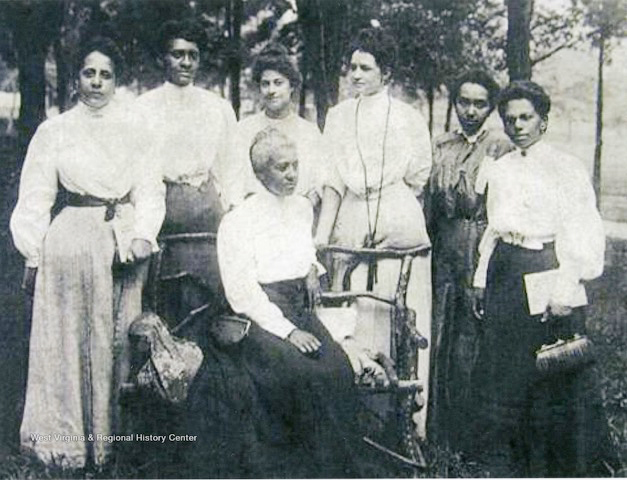

By William “Skip” Deegans
Shown in the above 1907 photograph at Harpers Ferry’s Storer College are members of the Niagara Movement. The photo is significant as it shows some of the first women to participate in this civil rights movement.
In 1905, Harvard-educated W. E. B. DuBois, an African American leader, organized a gathering of other African American male leaders to counter Booker T. Washington’s philosophy that forward movement of African Americans required “patience, accommodation, and self-help.” DuBois and his militant supporters sought full civil and political equality. Scheduled to meet in Buffalo, New York, DuBois and the 29 men who joined him were refused accommodations and had to move their meeting to the Erie Beach Hotel, a summer resort in Ontario, Canada. Out of that meeting came the Niagara Movement.
The second meeting of the Niagara Movement was in 1906 at Storer College and open to the public. Founded in 1857 by Freewill Baptists, Storer College was dedicated to educating formerly enslaved people. During its first 25 years it was the only educational opportunity in West Virginia for African Americans beyond primary school. Storer was also selected because Harpers Ferry was the site of John Brown’s raid on the United States arsenal in 1859 where, as Langston Hughes wrote, Brown and his followers “went to shoot (their) way to freedom.”
On the second day of the meeting at Storer College women were, despite disagreement among some of the men, granted full and equal membership in the Niagara Movement. Poorly organized and underfunded, the movement floundered until 1911 when the organization’s members felt an interracial and more powerful organization was required to fight racism. With continued leadership of DuBois, the National Association for the Advancement of Colored People (NAACP) was formed.
Photo courtesy of the West Virginia University Regional History Center.
Sources: University of Buffalo, Oberlain College, National Park Service, NPR.


